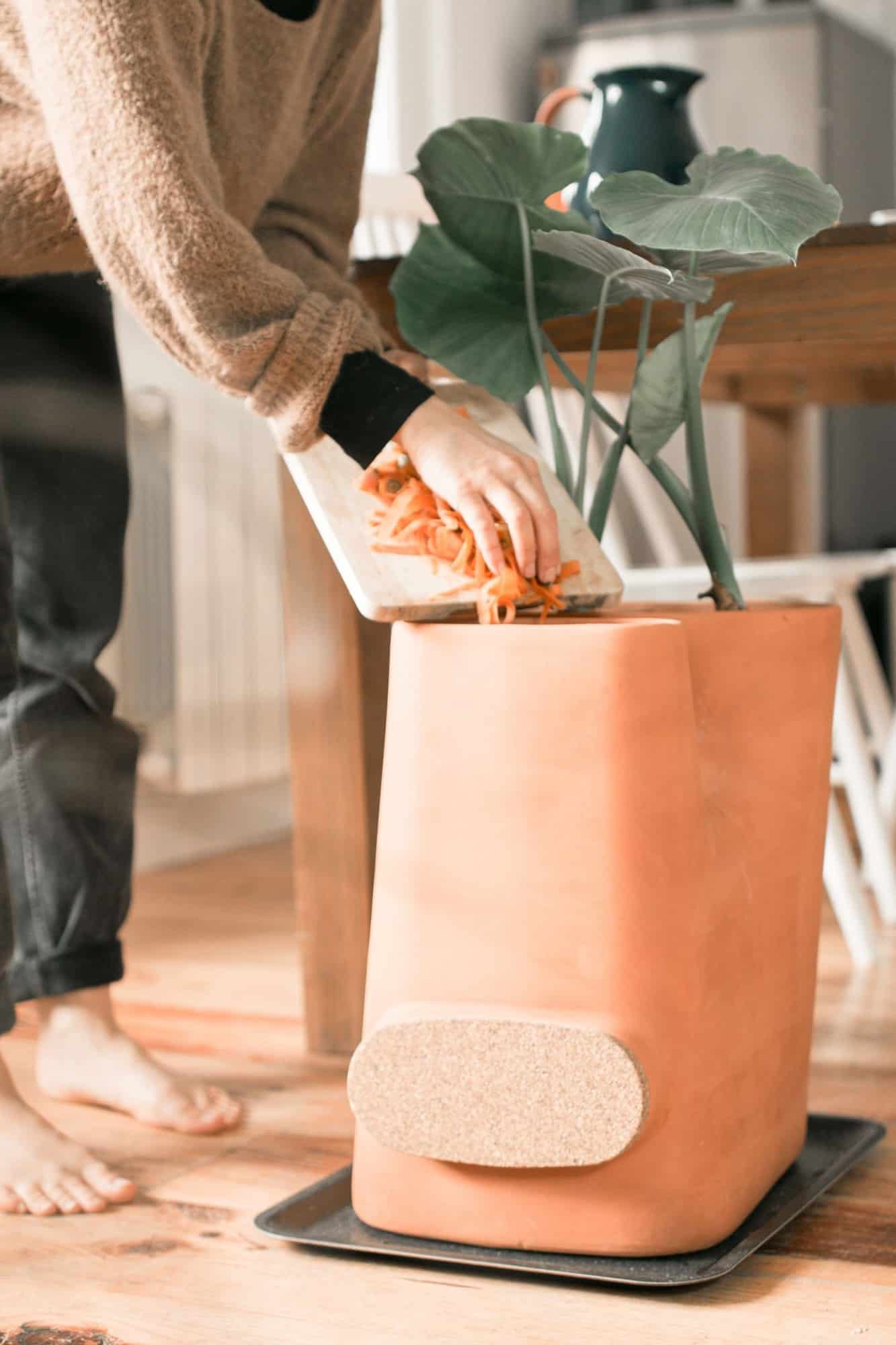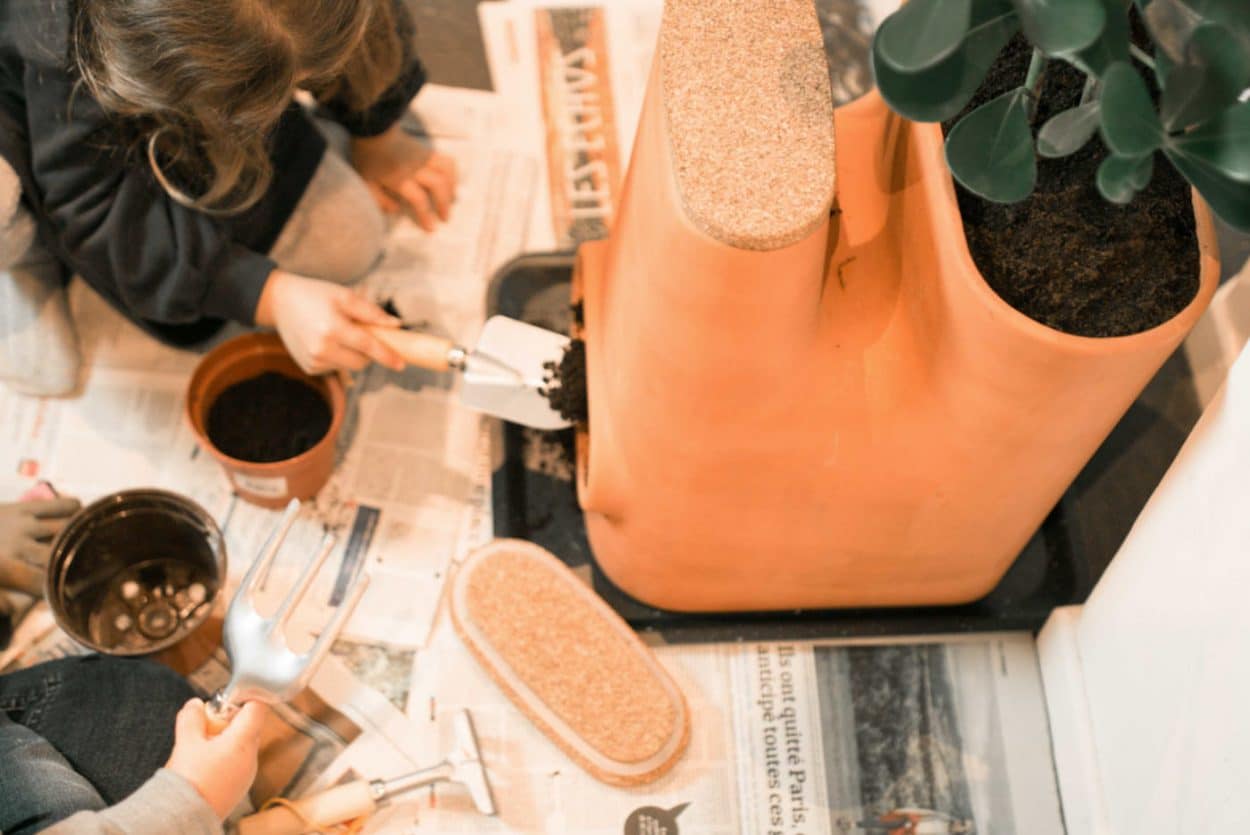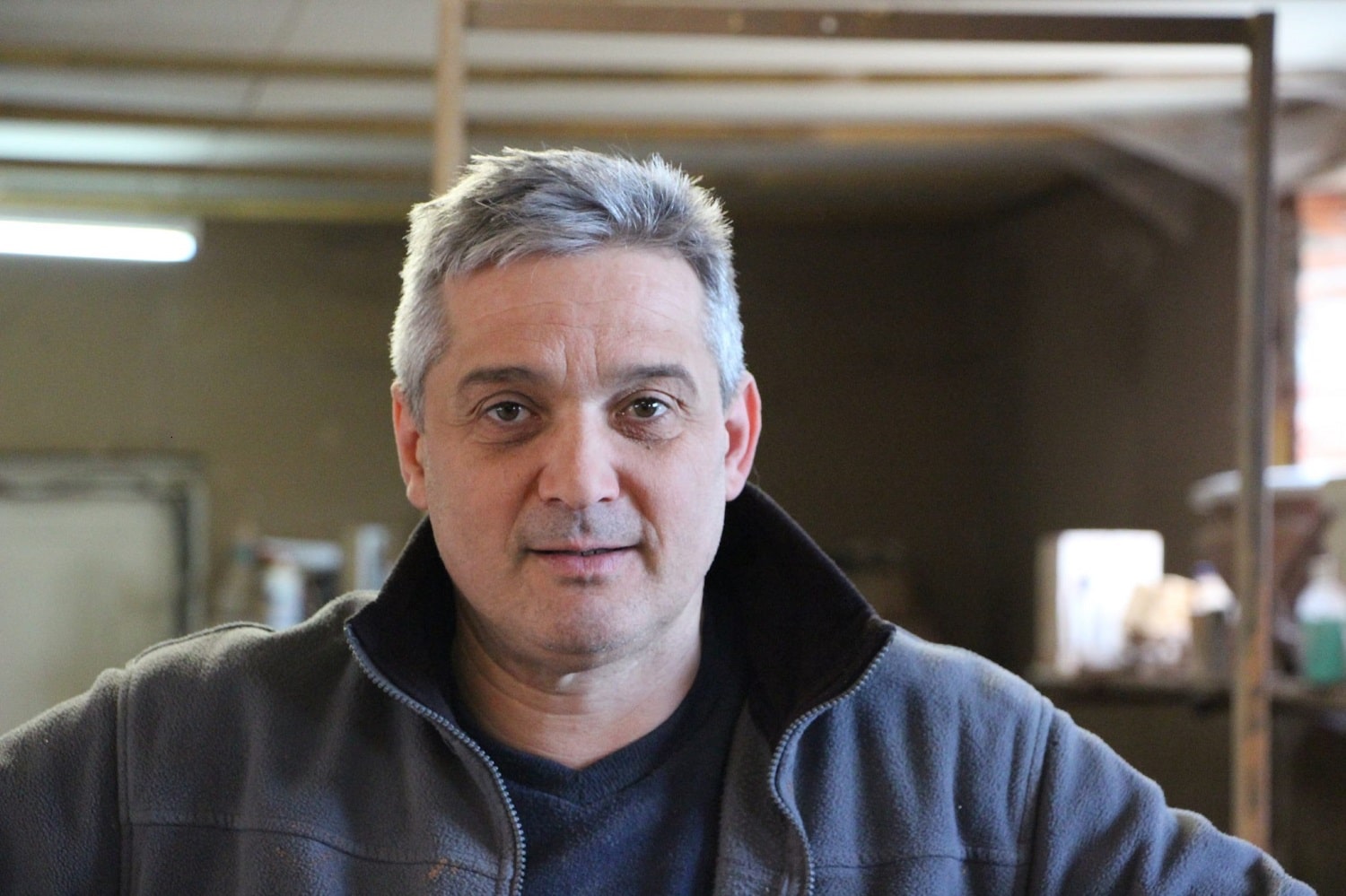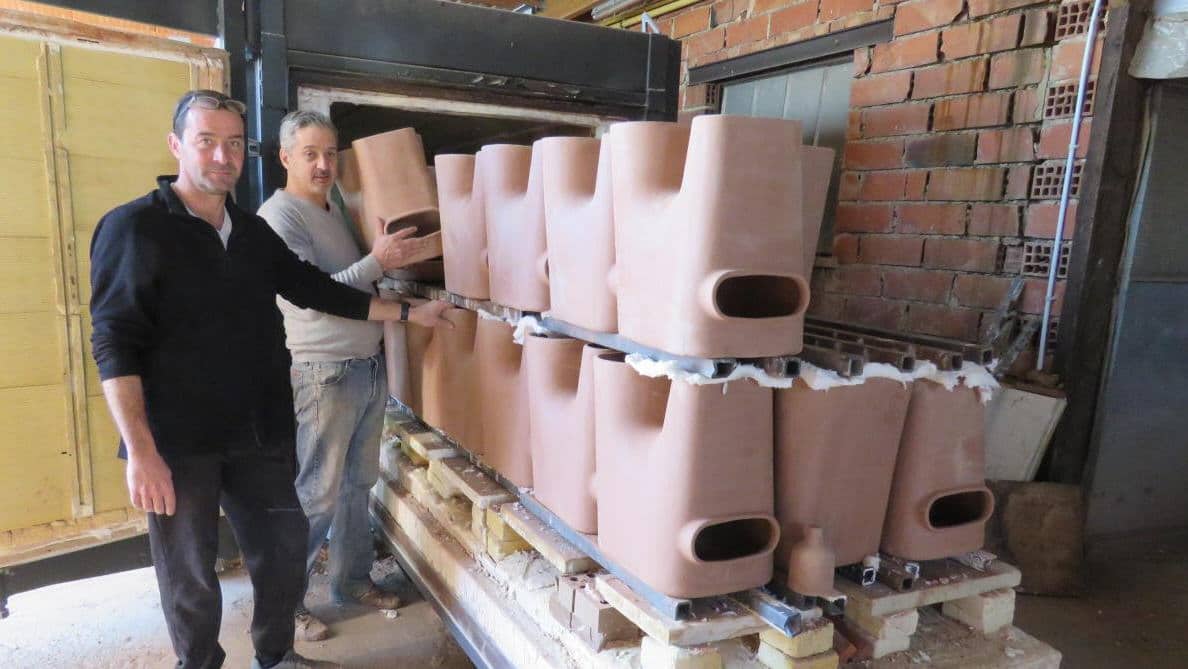This interview was conducted and first published by Transfarmers, an organization founded by a group of four friends who began with the design and marketing of a composter flowerpot. ArchiExpo e-Magazine has translated the original interview into English. This product could interest not only homeowners but also those in the hotel and restaurant industry.
While it took several years of work to perfect the system and design of the composter flowerpot, manufacturing the terracotta object requires serious everyday know-how. Etienne Drouilly, co-director of Pottery of Amance, discusses the steps of pot making in this interview. From the development of his slip to the cooking of the piece, this traditional craftsman makes 100% French. An approach that makes sense and that touched the DNA of Transfarmers.
Étienne Drouilly, ceramist in Amance (Aube), manufactures the main piece for Transfarmers. He produces it in his workshop in Aube, labeled Entreprise du Patrimoine Vivant (EPV), with the red earth of Champagne.
Transfarmers: Can you describe your background to us?
Étienne Drouilly: I had a classic career as a ceramicist. Three years in ceramic modeler school in Longchamp where I studied the design of molds and products. An internship where I was able to work more on the decoration and enamelling of ceramic objects. And finally, a training in enamel making in Switzerland before joining the Amance family pottery 30 years ago.
Transfarmers: A few words about Amance Pottery?
Étienne Drouilly: Founded in 1892 by the Alsatian Vingerver family with the aim of exploiting the surrounding sandstone deposits, the small pottery-tile workshop only made utility objects in sandstone. Bought in the 1930s by my grandfather, pottery has grown. At that time, only terracotta flower pots were made there. But after the oil shock we had to develop and design more everyday products. Since the 1980s, horticultural potters no longer exist and we have adapted our production to current demands: tiles, tiling, garden pots with ridges, decorative accessories, etc. Today, we have mastered 7 different manufacturing methods, including prototyping, modeling, manufacturing, enamelling, decoration. Everything is done on site with respect for the traditions of French craftsmanship. We are also proud to be one of the few brands with the Living Heritage Companies label.
Image Credits: Étienne Drouilly – Courtesy of Les Transfarmers; Brothers Etienne and David Drouilly in front of their composter flowerpots. Image published by L’Est éclair.
Transfarmers: What type of craftsman are you? How do you work?
Étienne Drouilly: I strive to carry on the traditions passed down by my grandfather and which I in turn pass on to my daughter. My brother David and I work together and are part of a group of associate ceramists to meet various demands. We synergize our know-how with those of two other local partners in order to produce more and better. By making our own clay and our products from A to Z, we produce 100% French.
Transfarmers: What are the characteristics of your red clay?
Étienne Drouilly: Our red clay is the land of Champagne. Today, very few ceramic companies use their own clay to make their objects. The quarry we operate offers us an artisanal clay with little iron oxide content, whose light and light color differs from industrial clays. We harvest the soil and let it dry outside for 1 year before sheltering it in a shed for another year. We then powder it before adding water. This is what will create the slip that will be used for the pouring. Our earth is more resistant to cooking. In France, we are about thirty ceramists to have our quarry and only 3 or 4 to manufacture our slip.

Transfarmers: What are the main steps in the production of your composter flowerpot?
Étienne Drouilly: In the morning we assemble the molds and fill them with the slip. For 4 to 5 hours, the mold will suck in the water and the earth will settle all around the plaster matrix until it forms the contours of the part. Stir well and watch the thickness of the wall of the pot that forms before removing the excess material.
In the evening we prepare the parts which will be unmolded the next day. Once unmolded, the jars dry in the open air for 4 to 5 hours. During this time, my brother and I carry out the finishes by hand (remove traces of the mold, stamp the logo, cut the openings of the composter flowerpot, sponge the pieces …). The jars will stay at room temperature for 6 days before baking for 18 hours.
Transfarmers: What were the main constraints and difficulties you encountered? And what solutions have you found?
Étienne Drouilly: The shape is very complex and this creates a lot of tension and deformation, especially in the mouths.
We cast in an open plaster mold, which has the particularity of forming the exterior of the object but not the interior. As the pots do not dry evenly at the top and bottom, we had to create a new mold taking these differences in drying into account. We watch the drying time like milk heating on the stove: The pots should not dry out too quickly as this could crack. In 2019, we lost a very large part of our production during the heatwave. We need to find the perfect balance between cooking time and temperature (the higher the temperature, the stronger the part, but the more porosity it loses).
We work with living matter and create our own clay which varies from time to time. This is an additional parameter to deal with!

Transfarmers: In total, how long and how many tries to get the Compost Flowerpot?
Étienne Drouilly: Hundreds of jars produced and two years of work. Since September, we have had a new mold which overcomes the drawbacks we encountered with the first one. Today, we no longer have any problem with the size of the mouths. Also, the edges of the pot are stronger, the finishes more beautiful, and we have added four feet to stabilize the object. But we still have losses. We therefore continue to develop our work. Within a month or two, we will be really up to speed with Transfarmers production.
Transfarmers: How many compost pots do you make per month today?
Étienne Drouilly: We are still in the development phase. With the intersecting sites in the workshop, we manufacture up to 200 pieces per month.
Transfarmers: What did you like the most about this project? and are you proud of it today?
Étienne Drouilly: In addition to the fact that the team is very friendly, it is an innovative, ecological, trendy and realistic product. However, we know that combining design and craftsmanship is not always easy. It’s one more string in our bow and we are proud of it.













